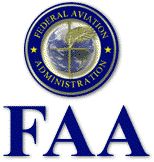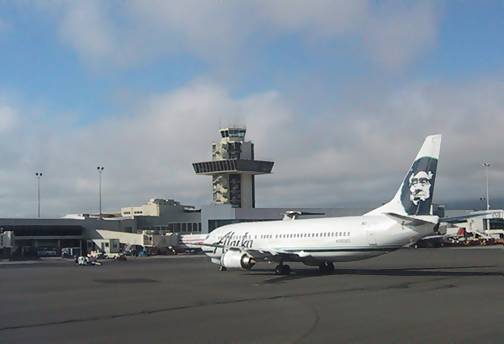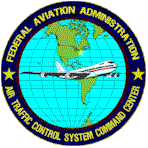Lesson 2: The People Who Work in Aviation
(Approx time to complete: 10 minutes.)
After completing this lesson you will have the confidence required to ease any fears or concerns about the human element of the safety equation.
-
SOME OF THE AREAS PUT UNDER THE FAA MICROSCOPE ARE:
-
Aircraft
-
Cockpit Crew
-
Cabin Crew
-
Ramp Area including De-Icing
-
Airline Stations
-
Airport Security
-
Air Traffic Control
-
Maintenance Facilities
-
Dispatchers
-
Airline Operations
-
Airline Training
The FAA
 The FAA is responsible for ensuring the safe, efficient, and secure use of our entire aviation system. The FAA is also responsible for the certification and inspection of airline operations, workers, the security of our airports, and for our nation's air traffic control system.
The FAA is responsible for ensuring the safe, efficient, and secure use of our entire aviation system. The FAA is also responsible for the certification and inspection of airline operations, workers, the security of our airports, and for our nation's air traffic control system.
The FAA monitors every aspect of aviation. They perform routine and surprise inspections looking at every detail of an airline's operation. They observe and inspect airline workers in their day-to-day operations and all paperwork including log books and manuals.
And they don't mess around. The slightest slip up and it's BIG trouble!
The FAA has the authority to issue civil penalties of up to $50,000. An air carrier is subject to a penalty of up to $11,000 for a single violation. There is no limitation on assessments for violations of the Hazardous Materials Transportation Safety Act or the Hazardous Materials Transportation Regulations.Certificate suspensions or revocations are issued to discipline an alleged violator and to deter others similarly situated. Do the Same FAA Standards Apply to Foreign Airlines?
No, but many countries use FAA rules as a guideline. If you are flying on a foreign carrier to or from the United States, the FAA regulations and ICAO standards apply. Airlines are expected to meet the standards of the individual countries where they operate as well as international safety standards.
ICAO (International Civil Aviation Organization) establishes the rules and regulations concerning training and licensing of aeronautical personnel, communication systems, air traffic control, airworthiness requirements for aircraft, aeronautical meteorology, and charts.
Generally, airlines from first world countries have a better safety record than those from lesser developed nations. More on this subject later.

Are you feeling nervous?
- Use deep breathing to calm yourself:
- 1. Push your stomach outward and slowly inhale through your nose.
- 2. Fill your lungs from the bottom up, and then pause.
- 3. Slowly exhale while whispering, "relaaaax". Do this a few times and you'll be ready to continue reading.
Air Traffic Controllers
 You probably knew of the controllers working in airport control towers. But many of these professionals work in en route control centers and terminal radar approach controls that few individuals ever see or are aware of.
You probably knew of the controllers working in airport control towers. But many of these professionals work in en route control centers and terminal radar approach controls that few individuals ever see or are aware of.
Air traffic controllers ensure the safety of nearly three million aviation passengers per day. Air traffic controllers use their skill and judgment to help safely direct aircraft to their destinations. Air traffic controllers are highly trained and trusted professionals.
LISTEN TO AIR TRAFFIC CONTROLLERS
There are several ways to become an air traffic controller. Many are trained while in the military. After their military term, the FAA can hire them. If not a part of the armed forces, civilians attend one of the 14 FAA-approved colleges that give degrees in aviation administration with an emphasis in air traffic control. Graduates from these acclaimed colleges then go on to the Federal Aviation Administration Air Traffic Control Academy.
Air traffic controllers take their responsibility for safety very seriously. It is a high stress, demanding job. Here's what they have to say on the National Air Traffic Controllers Association website:
I have the greatest respect for air traffic controllers. I have witnessed many times the fine job they do for all of us. They not only coordinate aircraft traffic, but provide a kind of a "big picture" to back up our flights. Although pilots are responsible for avoiding bad weather, controllers help provide critical information and act as just one more layer of safety for our flights.
The Mechanics
 It has been a quite a few years, but for a short while I worked as an aircraft mechanic in order to pay for flying lessons. During that time I became familiar with the fine people who service our planes. To this day I am still friends with many of them. I can say without reservation that this group of professionals takes the utmost pride in their work. They take their responsibility for safety very seriously. Never will you see an aircraft mechanic settle for a "quick fix". The FAA wouldn't allow it, his/her supervisor wouldn't allow it, his/her peers wouldn't allow it, and his/her conscience wouldn't allow it.
It has been a quite a few years, but for a short while I worked as an aircraft mechanic in order to pay for flying lessons. During that time I became familiar with the fine people who service our planes. To this day I am still friends with many of them. I can say without reservation that this group of professionals takes the utmost pride in their work. They take their responsibility for safety very seriously. Never will you see an aircraft mechanic settle for a "quick fix". The FAA wouldn't allow it, his/her supervisor wouldn't allow it, his/her peers wouldn't allow it, and his/her conscience wouldn't allow it.
To become an aircraft mechanic requires a lot of training and actual work experience. Aircraft mechanics do careful and thorough work. They have a high degree of mechanical aptitude, are self-motivated, hard-working, enthusiastic, and able to diagnose and solve complex mechanical problems. I often take the opportunity to observe them working on my aircraft. I know they do it right!
-
WHAT ARE SOME GOOD CHARACTERISTICS OF A GOOD AIRLINE PILOT?
-
Self confidence
-
Leadership ability
-
Calm, unflappable and well balanced
-
Capable of thinking and reacting quickly and decisively
-
Considerable technical skills
-
Good communication skills
-
Good physical condition
-
Team-player
-
Well educated
-
Extensive flying experience
The Pilots
What makes a good Airline Pilot?
During my career I have flown with all types of pilots with backgrounds in all types of aircraft. Some first learned in small general aviation planes. Others, before coming to our airline, flew high performance aircraft such as F-4's, F-18's, SR-71's, and even the Space Shuttle! But the one most important ingredient in a pilot would have to be the love of flying.
As with any pursuit, it is your passion for something that drives you to learn and perform at the highest levels. Later in this course you will discover that one of your assignments is to go to the cockpit on your next flight. After chatting with the pilots you will see that they do love flying airplanes.
What is a pilot's work schedule like? Airline pilots are typically away from home quite a bit. We often have to work holidays and weekends. This type of lifestyle can be fun and exciting, but it can be hard on family life.
What are the duties of an Airline Pilot? A pilot's duties start at least one hour before take off when we meet to receive preflight information and briefing. We then go over flight plans based on weather, temperature, wind-speed, weight at take off, etc. We check fuel requirements, instruments, electronic, normal and emergency equipment.
During flight we make announcements to keep passengers updated on flight progress, weather, and other details. In cruise the autopilot is normally engaged, but for take off and landing we like to handle the plane ourselves. We do this to stay proficient in the thing we love to do most, fly. We also make routine checks on all the operating systems. We follow instructions from air traffic control, who maintains radio contact with us from start of taxi to gate arrival.
All procedures are routinely accomplished by reference to checklists. We accomplish each item one step at a time in a very organized manner. Each of us is trained to do our duties in a standardized format. We can fly with a pilot we have never even met before and we will be able to work together knowing what to expect from each other. It is as if we had flown with each other for years.
When the flight is completed and the parking checklist is finished we make out an arrival report. We fill out the aircraft log book noting any mechanical discrepancies. If discrepancies exist we notify maintenance. And if everybody hasn't left yet we say, "Ba-bye" to the passengers. ("Ba-bye" is technical aviation lingo for "Thank you for flying with us. We hope you enjoyed your flight. Come back soon. Have a nice day!")
What about training? Right from the beginning pilot training is long, demanding and costly. Airline pilot applicants normally don't even bother to apply to a major airline until they have accumulated a number of pilot certificates, ratings, years of experience, and thousands of hours in complex aircraft.
Those who make it that far are put through further training courses upon joining the airline. Such training in fact never ceases throughout their career. They will have to retrain and attend refresher courses for each new aircraft type they fly and have to show regularly that they are competent and fit to fly. This includes oral, written, simulator, and real aircraft flight checks by both company Check Airmen and FAA Inspectors. It's a life of train and retrain, check and recheck, test and retest.
How about medical requirements? Tests, tests and more tests! Every six months it's off to see the FAA medical examiner. We have to undergo vision, hearing, reflex, EKG, urine, and drug tests, and some other tests I'd rather not talk about. No no Also, we can't take any medication or prescriptions without prior approval.
As you can see, everything is being done to ensure you have the most qualified people in the cockpit.
The Flight Attendants
Flight attendants are typically poised, tactful, and resourceful people who can interact well with strangers and remain calm under duress. Flight attendants help make flights more comfortable and enjoyable, but their main responsibility is for your safety.
Flight attendants are well trained to handle a wide variety of emergencies. Just like cockpit crewmembers, they attend training mandated by the FAA. Flight attendant training consists of things like how to evacuate an airplane, handling disruptive passengers, water survival tactics, terrorist situations, and treating medical emergencies such as heart attacks. They are skillfully trained to use defibrillators and most importantly how to administer C.P.R. They also must know how to locate and precisely operate onboard oxygen, megaphones, fire extinguishers and medical kits.
Observe your flight attendants on your next trip and you will see poised professionals who know first hand that flying is routine. If you experience turbulence, you will be reassured at how their facial expressions remain calm.
Next time you ask for some more peanuts from a friendly flight attendant remember that if the going gets tough they’ll be there to help save your behind! Please treat them with respect.
LESSON 2 SUMMARY
The FAA ensures your safe and secure flying experience by monitoring, inspecting, drug testing, and certifying the people who work in safety related areas of aviation. Aviation is "black and white". There are no "maybes". Either it is 100% safe, or we don't do it. You may have heard the saying, "Safety is no accident".
There is also a natural tendency for each worker to not only take pride in his or her own work, but keep an eye on others. Because we understand the importance of our work on the safety of others, we will not tolerate anything less than perfection!
From FAA Personnel to Air Traffic Controllers to Aircraft Mechanics to the Flight Crew, there is no industry in the world with better trained, tested, skilled, and motivated professionals than the people in the airline industry. Please email me with questions, comments or suggestions about the topics covered in Lesson 2.
CLICK HERE TO CONTINUE TO LESSON 3